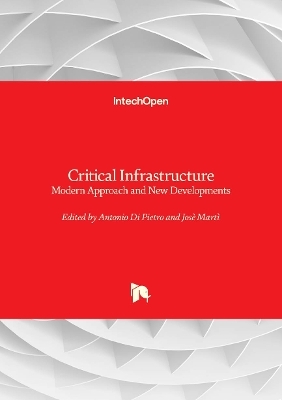
Critical Infrastructure
Modern Approach and New Developments
Seiten
2024
IntechOpen (Verlag)
978-1-83768-107-5 (ISBN)
IntechOpen (Verlag)
978-1-83768-107-5 (ISBN)
Reviews recent insights from risk identification and reduction to preparedness and financial protection strategies and proposes new approaches for better CIs and built environment protection.
Modern critical infrastructures (CIs) (e.g., electricity, water, transportation, telecommunications, and others) form complex systems with a high degree of interdependencies from one CI to the others. Natural disasters (e.g., earthquakes, floods, droughts, landslides, and wildfires), humanmade disasters (e.g., sabotage and terrorism), and system faults (due to structural and equipment failures) will affect not only the directly impacted CI but all interdependent CIs. Risk assessment, therefore, has to be done over the entire system of CIs and should also include the social and personal impacts. According to a 2022 report, 80% of cities have been affected by significant climate change hazards represented by extreme heat (46%), heavy rainfall (36%), drought (35%), and floods (33%). The impacts of climate change, therefore, affect the complex system of the built environment and result in interrelated consequences at different scales ranging from single buildings to urban spaces and territorial infrastructures. Since it is not possible to reduce the severity of natural hazards, the main opportunity for lowering risk lies in reducing vulnerability and exposure. Vulnerability and exposure are related to urban development choices and practices that weaken the system’s robustness. This volume reviews recent insights from risk identification and reduction to preparedness and financial protection strategies and proposes new approaches for better CIs and built environment protection.
Modern critical infrastructures (CIs) (e.g., electricity, water, transportation, telecommunications, and others) form complex systems with a high degree of interdependencies from one CI to the others. Natural disasters (e.g., earthquakes, floods, droughts, landslides, and wildfires), humanmade disasters (e.g., sabotage and terrorism), and system faults (due to structural and equipment failures) will affect not only the directly impacted CI but all interdependent CIs. Risk assessment, therefore, has to be done over the entire system of CIs and should also include the social and personal impacts. According to a 2022 report, 80% of cities have been affected by significant climate change hazards represented by extreme heat (46%), heavy rainfall (36%), drought (35%), and floods (33%). The impacts of climate change, therefore, affect the complex system of the built environment and result in interrelated consequences at different scales ranging from single buildings to urban spaces and territorial infrastructures. Since it is not possible to reduce the severity of natural hazards, the main opportunity for lowering risk lies in reducing vulnerability and exposure. Vulnerability and exposure are related to urban development choices and practices that weaken the system’s robustness. This volume reviews recent insights from risk identification and reduction to preparedness and financial protection strategies and proposes new approaches for better CIs and built environment protection.
| Erscheinungsdatum | 01.05.2024 |
|---|---|
| Verlagsort | London |
| Sprache | englisch |
| Maße | 178 x 254 mm |
| Themenwelt | Naturwissenschaften ► Geowissenschaften ► Geografie / Kartografie |
| ISBN-10 | 1-83768-107-4 / 1837681074 |
| ISBN-13 | 978-1-83768-107-5 / 9781837681075 |
| Zustand | Neuware |
| Informationen gemäß Produktsicherheitsverordnung (GPSR) | |
| Haben Sie eine Frage zum Produkt? |
Mehr entdecken
aus dem Bereich
aus dem Bereich
über eine faszinierende Welt zwischen Wasser und Land und warum sie …
Buch | Hardcover (2023)
dtv (Verlag)
24,00 €
Eine Einführung in die spezielle Mineralogie, Petrologie und …
Buch | Hardcover (2022)
Springer Spektrum (Verlag)
59,99 €


